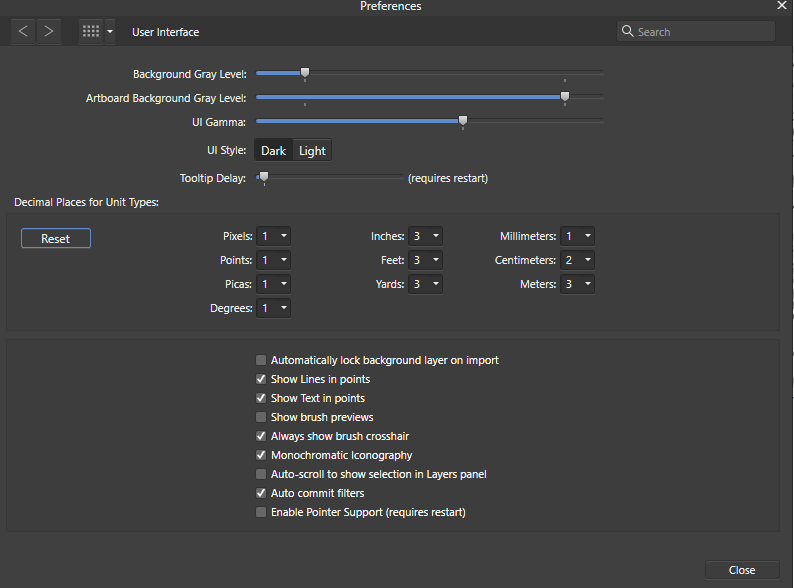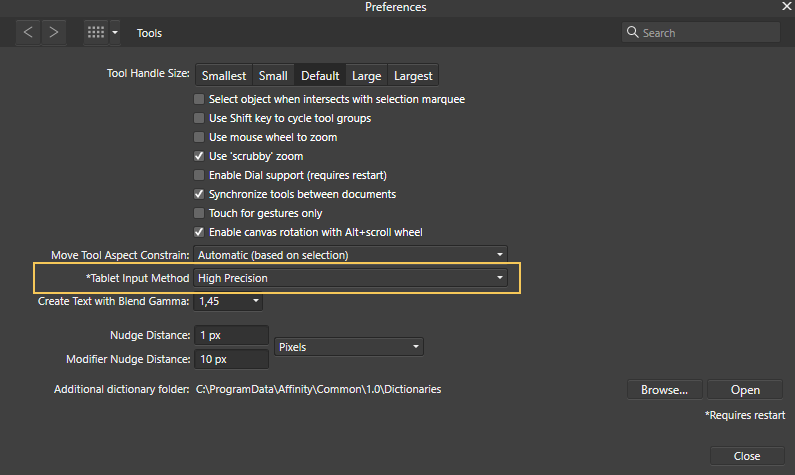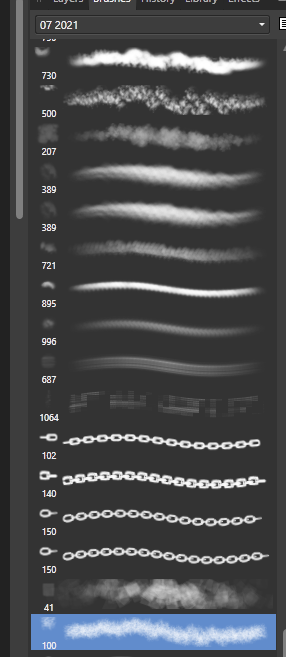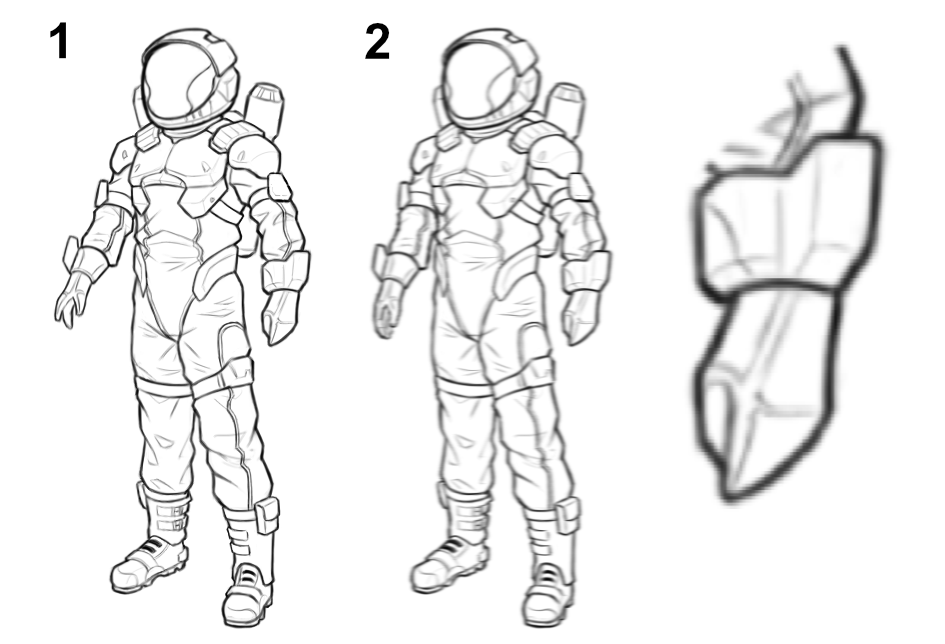
Halex
-
Posts
43 -
Joined
-
Last visited
Posts posted by Halex
-
-
For some reason "Tablet Input Method: High Precision" works better in older Affinity versions for me. I recorded a video showing how Flow works worse in new version. All my brushes are set in old "Tablet Input Method" and it will take a lot of work changing it again, also I really prefer the old "High Precision".
So I'd like to suggest you the old High Precision as another option for next update. -
I have double click problems with "Tablet Input Method: Low Precision". I already disabled everything in my Wacom and Windows settings, but this problem still happens.
One of the solution is changing it to "Windows Ink" Method, but another problem happens, the "Move Tool Aspect Constrain: Automatic (based on selection)", doesn't work (zoom is blurred when dragging).
Another solution is changing it to "High Precision", but this method has slower strokes.
I'd like a solution for "Low Precision" or "Windows Ink", because "High Precision" has slower performance. Here is a video recording what is happening. -
On 1/11/2023 at 12:07 PM, Michail said:
@Halex: You can change the click speed of your mouse. But you have to do this via the mouse driver at operating system level - not in Affinity Photo.
How can I do it?
-
-
Is there any reason for Affinity Photo 2 brushes is slower than first version? I recorded a video showing the same brush settings in both softwares, the same stroke is a little slower in Affinity Photo 2.
-
Same problem here, I'm using version 2.4.2.
-
Hello. There is a bug in Brushes Window. When I click on brush sometimes the software doesn't choose that brush. As you can see in the video, in fourth stroke I chose the large brush, but the software still uses the small one. I'm using Affinity Photo v2.4.2
-
14 hours ago, stokerg said:
Hi @Halex,
Can you post a screenshot of the Dynamics section from the Brush Editor, for both V1 and V2.
Please feel free to upload a better quality recording, as it's a bit difficult to make out all of the settings in the current recording.
Hello Stokerg
Here are my settings in image and a video with a better quality. Thanks. -
I'm using Affinity Photo v2 and I realise that brush pressure is different from v1. Here is a video recording my process, see how the pressure is different. How can I use the same pressure? I'm using same setting in both softwares.
-
On 3/12/2024 at 7:04 AM, NotMyFault said:
- You need to activate snapping with option „force pixel alignment“.
- the layer will stay sharp as long you keep it on while integer position, and use 90 degree angles or multiples, and do not change layer DPI / size
- otherwise you need to rasterize the layer once after every change which newly causes blurriness. this will „bake in“ the blurriness from layer misalignment.
Wow, thank you very much! I changed the decimal to 3, activated the "Force Pixel Alignment", deactivated the "Move by Whole Pixel" and it works perfectly now. You are amazing.
-
9 hours ago, R C-R said:
If you mean about 'activating' decimals, I think what @thomaso meant was to set Decimal Places for Unit Types for Pixels values to more than 1 decimal place, like to at least 3 or higher.
Wow, thank you very much! I changed the decimal to 3, deactivated the "Move by Whole Pixel" and it works perfectly now. You are amazing, guys!
Thanks Thomaso and RC-R. I wish much success for you. -
23 hours ago, thomaso said:
If you move an object from a decimal position by whole pixels
 then these decimals are maintained when moving.
then these decimals are maintained when moving.
To avoid decimal pixel positions:
1. Open the Transform panel to have an eye on decimal pixels. (make sure 'decimals' are activated in the app Preferences > User Interface)
2. Set Pixels as ruler unit.
3. Deactivate the option "Move By Whole Pixels". (but keep Force Pixel Alignment activated)Thanks Thomaso, it works when I try just to move the layer, but still has some problems when I change the angle. I think it is not possible to keep the image perfectly rotating it, but I just want to check it with you. Please, look if my "User Interface" prefences is correct to use the tool you suggested me:
-
23 hours ago, thomaso said:
The reduced quality appears to be caused by your various actions without having "Force Pixel Alignment" activated. This option avoids decimal pixel positions (e.g. in the Transform window) and reduces antialiasing applied to individual pixels. With every rasterization process after a position or size change, these pixels are then 'burned'.
https://affinity.help/photo2/English.lproj/pages/DesignAids/pixelAlign.html
In your video you seem to have the Toolbar currently deactivated. If it gets displayed you can access the "Force Pixel Alignment" with one click. It appears to be not available as menu command.
Thanks, but it doesn't work here. I recorded another video showing the same problem, please, look if I did something wrong in the settings.
-
Hello guys
There is a problem in layer resolution when I rasterize an image in different angles and different positions. Take a look:
-
On 3/10/2024 at 3:22 PM, walt.farrell said:
I think you should Rasterize your layer 002 before you do the merge. If you don't, it has a different DPI than the existing layers in the document, and I think that will cause problems.
Thanks, but the same happens when I rasterize it before merge them.
-
Hello guys
I found out a bug in Affinity Photo when I try to merge two layers.
-
2 hours ago, SrPx said:
Hello, I replied to your PM, I sent you some tips over there

Please, let me know if some of that works...
It does not happen to me although I have an even older Wacom (mine is Intuos 4 XL while yours is 5).
Anyway, please try those things I mentioned, as at least will help discarding factors, and in the best scenario, might solve your problem.
Edit: Also, if something works and solves the problem, to report it here for people checking this thing in the future. I had that issue years ago, but since a while never had this problem again, in several installations and different hardware. So, I believe it might be one of the things I told you in that PM reply.Thank you for your help, SrPx
I found out a solution!! Just go to Affinity Preferences / Tools / Tablet Input Method / High Precision.
Now the double click is turn off. -
I can't turn off the double click, it annoys me a lot when I'm drawing. I recorded a video explain how is my problem.
I'm using Windows 11 and digital pen Intuos 5. -
How can I turn off the double click in Affinity Photo? It annoys me at drawing.
I'm using Windows 11 and Intuos 5, here is a video recording my problem:
-
Hello, how can I export one brush to other category? I have this one in a category and I want to move this one to other category. Is it possible?

-
I was using 1920x1080px size.
-
4 hours ago, Callum said:
Hi Halex,
I can't see anything in your video that shows other lines becoming blurry as a result of the transform operations you are applying to your selected line. If possible could you provide screenshots that show the effected lines before and after transforming another line?
Thanks
CHello Callum.
Yes, take a look at that image, you can see how it become blurry when I try to scale a separate layer. You can see that bug trying that: copy a line art draw, cut some part of its, paste in other layer, scale that layer, merge with line art draw layer. Repeat that and you can see how the image loses resolution. -
When I move/scale/rotate some line art drawing, others line art decreased resolution. Maybe it isn't clear to see it on the video, but it is happening with me.
-
7 minutes ago, v_kyr said:
What snap, shouldn't be zoom related?
See:
- Preferences > Keyboard shortcuts (the View shortcuts section)
- The Online Help for the Affinity apps
APh > Preferences ... > Keyboard shortcuts
Thanks. There is a snap in 50% and 100% zoom.










Tablet in "High Precision" works better in older versions
in Feedback for the Affinity V2 Suite of Products
Posted
Hello SrPx
Your tips are always welcomed. The Open GL works good here, but it seems you found out the problem: turn off the accumulation pressure works better. I still need to do more experiments but it seems better for now. Thank you.